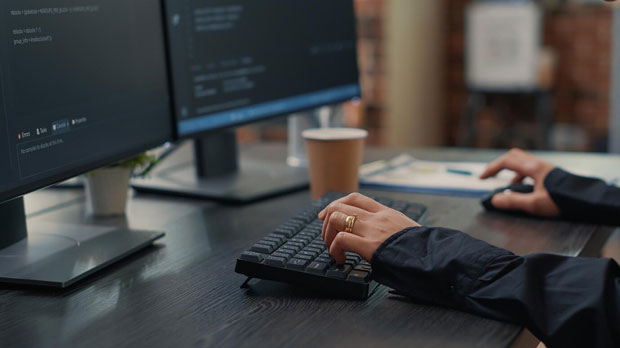Using a socks5 proxy to access certain websites, such as extratorrent, is often seen as a way to enhance privacy and avoid detection. However, despite its anonymity benefits, it’s crucial to understand the limitations and potential risks that come with this method. SOCKS5 provides a layer of security by hiding your IP address from websites, but it does not guarantee complete protection from being tracked. Factors such as the proxy provider’s trustworthiness, the presence of logging policies, and other tracking methods can still compromise your anonymity. This article delves into the nuances of SOCKS5 and its potential vulnerabilities when used for accessing websites like extratorrent. What is SOCKS5 and How Does it Work?SOCKS5, or Socket Secure 5, is a protocol used for routing internet traffic through a proxy server. It functions by acting as an intermediary between the user and the website or service being accessed, thereby masking the user’s IP address. Unlike HTTP proxies, which are limited to web traffic, SOCKS5 supports various types of traffic, including web, email, FTP, and others, making it more versatile. sock s5 proxies are often used for privacy, bypassing geo-restrictions, and preventing direct IP tracking. However, they don't encrypt traffic, which means data can still be exposed to potential eavesdropping if other protections aren’t in place.The Role of SOCKS5 in Anonymity and SecurityWhile SOCKS5 offers a degree of privacy by concealing the user’s original IP address, it doesn’t guarantee complete anonymity. The proxy server that routes the connection could be a potential point of vulnerability. A key factor in the effectiveness of SOCKS5 is the trustworthiness of the proxy provider. Some proxy providers may log user data, including connection timestamps, destination IPs, and traffic patterns, which could lead to potential tracking or identification.Moreover, SOCKS5 proxies lack encryption, meaning that while the user’s IP address is hidden, the data transmitted between the user and the proxy server can be intercepted. If sensitive data or personal information is being shared, it’s possible for third parties to track or access it, especially if the server is compromised or monitored by malicious actors.How Can SOCKS5 Be Tracked?Several methods can be used to track a user even when accessing websites via a SOCKS5 proxy. Below are the key factors that contribute to the possibility of tracking:1. Proxy Provider LoggingSome SOCKS5 proxy providers may keep logs of user activity, which can include information such as the IP address, connection times, and visited websites. If the proxy provider is subpoenaed or compromised, these logs could potentially be used to trace the user’s activity. Even if no logs are kept, some providers may still collect minimal metadata, which can be sufficient for tracking purposes.2. Web Browser FingerprintingWebsites can use a technique known as "browser fingerprinting" to track users. This method collects various details about the user’s browser, such as the operating system, screen resolution, installed fonts, and browser extensions. Even if the user’s IP address is masked by a SOCKS5 proxy, browser fingerprinting can still link their activity across different sessions, making it possible to track them over time.3. Cookies and Local StorageEven with the use of SOCKS5, websites can track users via cookies or other forms of local storage. These small data files can store unique identifiers on the user’s device, allowing websites to remember and track the user across different sessions. Without proper cookie management or the use of privacy-focused tools, users can still be traced even if they are using a proxy.4. DNS LeaksA DNS leak occurs when a user's DNS requests are sent outside the proxy server, directly to the Internet Service Provider (ISP). This can lead to the exposure of the user's original IP address, even though they are using a SOCKS5 proxy. To prevent this, users must ensure that their DNS queries are routed through the proxy server to avoid leaking sensitive information.5. Malware and Tracking ScriptsMalware or tracking scripts can also pose a significant threat to anonymity when using SOCKS5 proxies. Certain malicious software can bypass the proxy and directly communicate with the user's device, revealing their IP address and other personal data. These types of threats may not be mitigated by SOCKS5, as it only hides the user’s internet traffic and does not provide comprehensive security against malware or scripts.Risks of Using SOCKS5 to Access Torrent SitesUsing SOCKS5 proxies for accessing torrent sites, such as extratorrent, poses specific risks. Torrenting is often associated with high levels of data transfer, which increases the likelihood of attracting the attention of anti-piracy groups and other monitoring entities. Although SOCKS5 hides your IP address from the website itself, the proxy provider or other intermediaries could still be tracking your torrent activities. Furthermore, if the proxy is unreliable or compromised, your personal information could be exposed.What to Consider for Enhanced Security?While SOCKS5 offers some level of privacy, it is far from foolproof. To ensure better security and minimize the risk of being tracked, users should consider the following:1. Use a Trusted and No-Log Proxy ProviderIt’s essential to choose a proxy provider that has a strict no-log policy and is known for its commitment to user privacy. Researching and selecting reliable providers can significantly reduce the risk of tracking.2. Enable EncryptionFor enhanced privacy, users should consider pairing SOCKS5 proxies with additional encryption tools such as a VPN. A VPN encrypts the traffic between the user and the proxy, making it more difficult for third parties to intercept or track the data.3. Regularly Clear Cookies and Use Anti-Fingerprinting ToolsUsers should regularly clear cookies and use privacy-focused browsers or extensions designed to block fingerprinting scripts. These steps help mitigate tracking through unique identifiers and increase online anonymity.4. Use DNS Leak ProtectionTo avoid DNS leaks, users must ensure that their DNS requests are routed through the SOCKS5 proxy. Many VPN services also offer DNS leak protection, which can be useful for users who want to further secure their connection.5. Be Cautious of Malware and Tracking ScriptsUsing antivirus software, avoiding suspicious downloads, and employing browser security features can help protect users from malware and tracking scripts that could compromise their anonymity.Conclusion: Is SOCKS5 Enough for Privacy?SOCKS5 is a useful tool for masking your IP address and accessing content with a higher degree of anonymity. However, it’s important to understand that it is not a comprehensive privacy solution. Users need to take additional measures to prevent tracking, such as using VPNs, blocking cookies, and securing their devices against malware. SOCKS5 can offer privacy benefits when used properly, but it should not be relied upon as the sole method for securing online activities, especially when accessing potentially sensitive or high-risk sites like torrent platforms.
Jul 02, 2025



































































